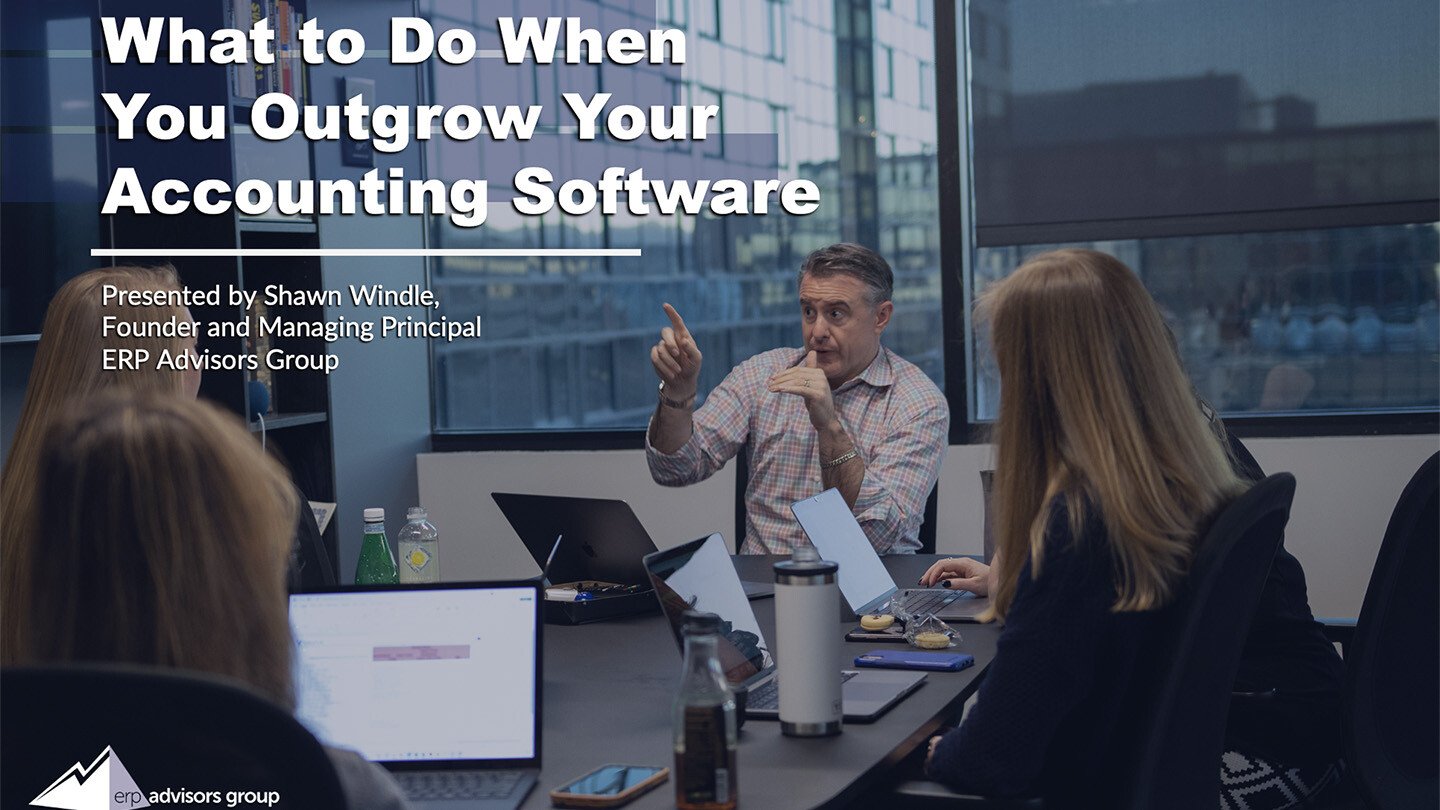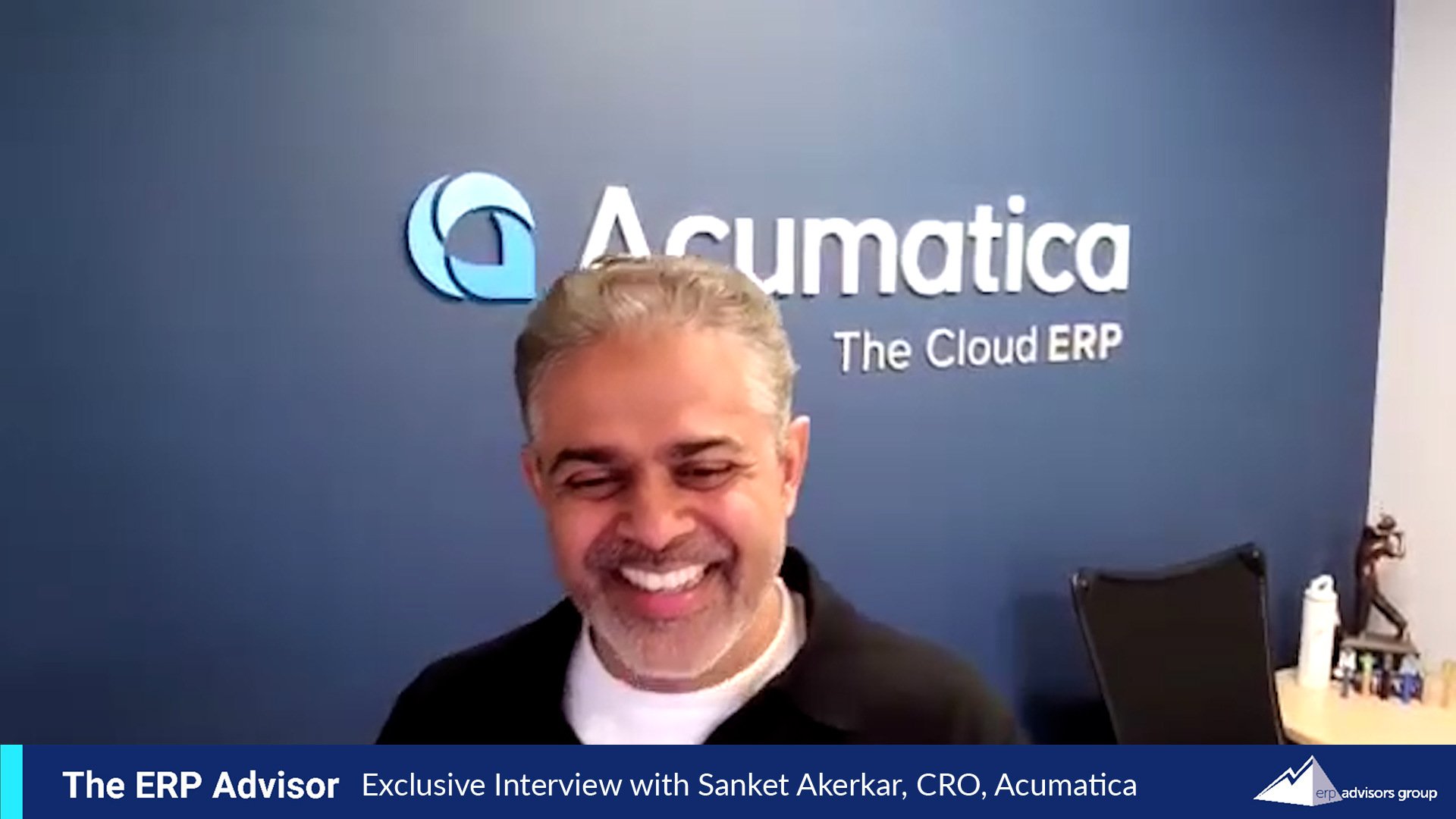
One of the worst things that can happen to a business is falling victim to a failed ERP implementation. After months of preparation and extensive resources spent on transforming the business, it is disheartening, and costly, for the efforts to have been for nothing. Ultimately, business leaders find themselves in despair, questioning, “Is there any way to recover from a failed ERP implementation?” We are here to tell you that there is hope. Join ERP expert, Shawn Windle, as he explores case studies of clients who came to us after a failed ERP implementation and how we were able to lead them to a successful go-live.
ERP Implementation Case Study Series: Recovering from a Failed ERP Implementation
Between 55 and 75% of ERP implementations fail, making it feel nearly impossible to recover from this common downfall of businesses worldwide. Fortunately, there is a way out. Learn from the experiences of others in EAG’s latest installment of the ERP Implementation Case Study Series: “Recovering from a Failed ERP Implementation.”
Why Does a Successful ERP Implementation Matter and Why Do So Many Ultimately Fail?
Businesses confront the need for an ERP upgrade because they see the operational roadblocks faced because of unsupported, legacy software. Executives are willing to take on that risk to ensure the continuity and stability of their company’s software.
No one enters an ERP project expecting it to fail. In fact, many businesses enter upgrades under the impression that the experts they are purchasing the software from will pick up all the slack. For this reason (and many others) ERP implementations tend to fail.
First and foremost, anytime you start anything like an ERP implementation, there needs to be a precursory step which is “initiation.” At this level, the biggest risks are selecting the wrong software or the wrong implementation partner who doesn’t know your industry or team. This is also when you must set realistic expectations for how much time your team can commit to the initiative. Without these pieces in place, your project is destined for failure from the start.
Second, you cannot underestimate the importance of data. Data has destroyed a number of ERP implementations over the years, making it all the more vital for this step to be considered and confronted early. Don’t get caught off guard, download our “Data Migration Checklist” to guide your project.
Then, you need to account for integrations. You must understand your new application and how it will interact with other applications in your ecosystem, your customers’ ecosystems, and your vendors’ ecosystems. Additionally, you should know how the new system will interact with your bank and payroll providers, along with other vital business integrations. Integrations should be considered early on because they can take weeks if not months to initiate and get the right people involved.
Another common factor in a derailed ERP implementation is change management. Within this step, you must consider the who, the what, the when, and the how.
- Who is the ERP going to affect?
- What are we going to do?
- When is the training going to happen?
- How is it going to go when we are changing ERPs?
Setting Realistic Expectations Across All Stakeholders
Success and failure are measured in degrees, especially during an ERP implementation. Where your team sets the expectations will have a direct impact on the outcome of the project. If you set the expectations and goals too high, you likely won’t have the resources or expertise to pull it off. The real goal of the first phase of an ERP implementation is to get the minimum viable product in place, meaning the core functionality the business will need to operate and grow.
Many businesses have grown accustomed to overly customized systems, so they expect the same detailed level of operational functionality immediately out-of-the-box with the new ERP. This is extremely unrealistic and creates expectations that doom your project before it even begins. Make sure that all expectations align and are set at a realistic level to guarantee employees are set up for success, not failure.
Resources to Mitigate ERP Implementation Risks
The obvious answer is to hire a Client-Side ERP Implementation Consultant, like the experts at EAG, to mitigate risks and handle the “soft side” of your ERP implementation. ERP consultants devote their careers to assisting clients in reaching their ERP goals. Sometimes, you need a slower pace to handle your ERP implementation. For those projects, we recommend taking time to research solutions and the best partners for that product. Fortunately, many great partners are on the market and want to help you succeed. You can also ask colleagues, but remember, each project is different, and just because theirs succeeded with a specific partner, does not mean yours will.
Once you have selected a solution, ensure you have the right resources backing your project. Great salespeople will stick around to help out on your project, but sometimes you need to advocate for the best people. If you do not get a sufficient answer, ask for their boss, and if it happens again, ask for their boss’s boss, and so on. Do your research until you find someone who has worked in the ecosystem for a while. These experienced individuals will know who to contact and when to introduce new partners to meet your needs.
Case Study #1: Scientific Measurement Device Manufacturer with a Failed Manufacturing ERP Project
The first client came to us after experiencing the turmoil of a failed ERP implementation. They were on a legacy manufacturing application and were supported by a partner who had done a great job supporting their legacy application for many years. Unfortunately, the vendor decided to no longer support the application in line with the announcement for end-of-support from the vendor. The risk was too great now that the application would no longer receive security or regulatory updates. The partner advised the client to follow the vendor’s upgrade path and they agreed, so long as they had support from the partners (who were the experts).
While this appeared to be the clearest path because the partner would support the new product, it proved to be the wrong move for our client. They attempted the upgrade, but the partner did not know the new product as well as they knew the old one, leaving fundamental flaws in the functionality that would not work for their business.
After significant time and money had been invested in the project, they had to scrap everything. This is when they came to us. Our team analyzed the business and its state to identify the real problems that needed to be addressed. Their fears were confirmed when we uncovered their needs were not truly understood by the implementation partner and the software vendor would be unable to meet them. We knew they needed a different solution to meet their detailed requirements for the future.
Ultimately, we helped them select the right solution and when a functionality gap was discovered during implementation, we advocated for the client with the software vendor until they built the functionality from the ground up. At this point, however, the client’s team was no longer bought into the process due to ERP fatigue, so the project was once again stalled.
Then, the craziest thing happened to move the project along…they were hit with a cybersecurity attack. The legacy, on-premises system was taken hostage by ransomware and rendered useless. They had no backups, which meant it was time to go live on a new ERP.
The biggest lesson learned during this study was the upgrade path is not always as straightforward as people think. Sometimes, the vendor’s pre-defined path is not right for your business, so you should always perform an analysis and identify the right path forward with an expert.
Case Study #2: National Engineering Firm that Spent Four Plus Years Implementing a Professional Services ERP to No Avail
Eventually, the client felt hopeless and canceled the project before finding ERP Advisors Group. The client was on a very misunderstood product in the market, primarily because it is such a robust product to implement. At the time of purchase, our client did not really know what they were buying or committing to. They had the right product with the right partner but committed the cardinal ERP sin: demanding the new application do exactly what the old application did. While many businesses on legacy applications demand over-customization of their systems, we try to remind our clients why they are leaving behind their outdated systems.
Much like our previous client, this client needed to keep the minimum viable product in mind. It is vital for companies confronting this process to do their due diligence to ensure they truly understand the process and what will be required of them. With a thorough understanding of ERP implementation, you know what is too much to ask for. We stepped into the process to set clear expectations for our client and help train their people. By assisting in the development and following of a disciplined process, we were able to help our client reach go-live.
Case Study #3: 1,000 Field Service Company M&A Roll-Up that Acquired an ERP They Were Unable to Implement
This ERP project dovetailed deep into the nuances of private equity strategies. Within a private equity strategy, the PE firm may go buy a strong platform business, represented by good leadership, with a solid system in place. From there, the PE firm will purchase other businesses that do something similar or provide adjacent services and layer that business’s customers, vendors, and best people into their platform business.
Our client was in the thick of a PE play, during which they went out and purchased a basic financial application in response to their need for a new ERP. Our team came in to perform an analysis and confronted the client with the truth: there was no clear need or use for the system they purchased. Their needs had not been defined or documented, making it difficult to select a system that would actually solve their unidentified problems. We helped them identify their needs for each business function, not only for today but for the future.
We led the client toward a best-of-breed solution that we knew would be right for them, but many applications would need to interact and interface. Businesses need to understand when they have a next-generation best-of-breed, they must have people who know the system and its inner workings. Additionally, those people need to have the ability and time to focus on the project.
Unfortunately, the project eventually stopped in the wake of PE activities. Our client’s company was sold to a larger player, so where the business stands is now up in the air. With that, the contracts and terms in place would need to be honored or settled.
This project can teach many lessons, especially when it comes to identifying negative indicators over the course of the project. When you see those indicators, you must take a step back, organize your team, and begin working toward the best outcome you can. Sometimes, that means stopping the entire project. In the long term, there is always a solution and the right thing to do, but you need to widen your sphere of knowledge and responsibility.
Conclusion
At the end of the day, timing is everything for an ERP implementation. All the resources and pieces must be in place for a project to avoid falling victim to a failed ERP implementation. If your business is struggling to recover from a failed project, take the first steps toward success and schedule a free consultation, today!





